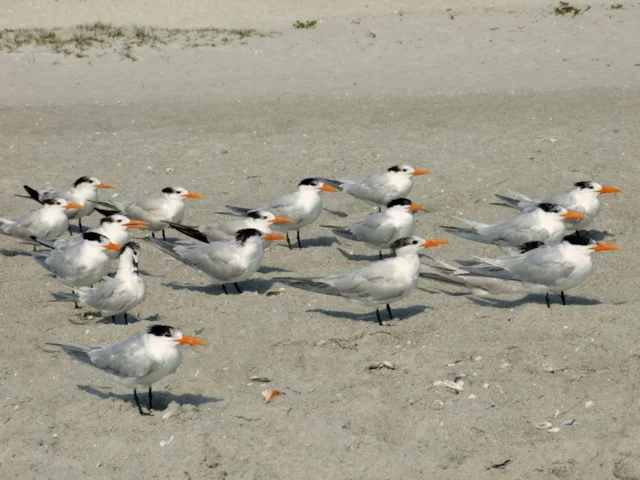Oil threatens Senegalese seabirds
6fa95306-ee4c-4b12-801f-9e3cb15475fb

The discovery of oil reserves off the shore of Senegal stands to jeopardise the world's largest breeding colony of Royal Terns.
Saloum Delta is a large national park of 73,000 ha situated on the Atlantic coast of Senegal, north of the Gambian border. A number of isolated sandy islands are situated a few kilometres from the mainland. One of them, île aux Oiseaux, is one of the most important breeding sites on the Senegal coast for colonial seabirds, including Caspian and Royal Terns, and Slender-billed and Grey-headed Gulls. The island sustains up to 80 per cent of the total population of Royal Terns. In West Africa, then species breeds from Guinea to Mauritania, but its entire African breeding population is estimated to be only 95,000 pairs, of which up to 42,000 breed in the Saloum Delta, making it the world’s most important breeding site for this species.
BirdLife International, through its seabird conservation project Alcyon, along with VEDA Consultancy (a consulting firm working for BirdLife International on colonial breeding birds in West Africa), informed the panel of the recent discovery of oil in the Sangomar Deep block, off the Senegalese coast close to Saloum Delta, and its possible negative consequences for the terns and other seabirds.
A three-day meeting of the Experts Panel at the Abidjan Convention on Marine Environmental Standards for Offshore Oil and Gas Development took place in February in Senegal’s capital, Dakar, and brought together 25 experts and delegates from 10 countries to confront the potential threats to the West African environment from the activities of offshore oil and gas industries.
Saloum Delta is a large national park of 73,000 ha situated on the Atlantic coast of Senegal, north of the Gambian border. A number of isolated sandy islands are situated a few kilometres from the mainland. One of them, île aux Oiseaux, is one of the most important breeding sites on the Senegal coast for colonial seabirds, including Caspian and Royal Terns, and Slender-billed and Grey-headed Gulls. The island sustains up to 80 per cent of the total population of Royal Terns. In West Africa, then species breeds from Guinea to Mauritania, but its entire African breeding population is estimated to be only 95,000 pairs, of which up to 42,000 breed in the Saloum Delta, making it the world’s most important breeding site for this species.
BirdLife International, through its seabird conservation project Alcyon, along with VEDA Consultancy (a consulting firm working for BirdLife International on colonial breeding birds in West Africa), informed the panel of the recent discovery of oil in the Sangomar Deep block, off the Senegalese coast close to Saloum Delta, and its possible negative consequences for the terns and other seabirds.
A three-day meeting of the Experts Panel at the Abidjan Convention on Marine Environmental Standards for Offshore Oil and Gas Development took place in February in Senegal’s capital, Dakar, and brought together 25 experts and delegates from 10 countries to confront the potential threats to the West African environment from the activities of offshore oil and gas industries.

